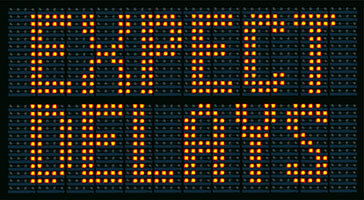 The use of delays in audio recording, either in between a sound and the reverberation that follows it, or between two otherwise very similar or identical sounds, is very useful for a number of reasons. But all these reasons have to do with the way our brains tell us which direction some sound is coming from, or how far away it is.
The use of delays in audio recording, either in between a sound and the reverberation that follows it, or between two otherwise very similar or identical sounds, is very useful for a number of reasons. But all these reasons have to do with the way our brains tell us which direction some sound is coming from, or how far away it is.
Thanks Mother Nature for that. These kinds of things help us to survive in the world, and understanding how our brains interpret sound location and distance can also help us do things to our audio productions in the studio to make the sounds more meaningful and rich to the listener.
The tips in the article referenced below are mainly focused on how we sense the front-to-back sources of sound. If you add these tricks to the other ways to make sounds appear to separate side-to-side (using the panning controls on a track) and even bottom-to-top (using EQ to help separate sounds with high and low frequency controls), you can start to create awesome mixes.
In Des’ article here: http://www.hometracked.com/2008/03/04/using-delays-for-3d-sound-placement/, he talks about these things and even provides a few audio examples. In one comparison, he makes a drum kit appear either closer or farther away by inserting a delay between the direct sound of the drum and the reverb that follows (if the reverb hits your ears after you hear the direct sound, the drums appear closer).
Have fun fooling other people’s neurons to make audio sound better!
Leave a Reply